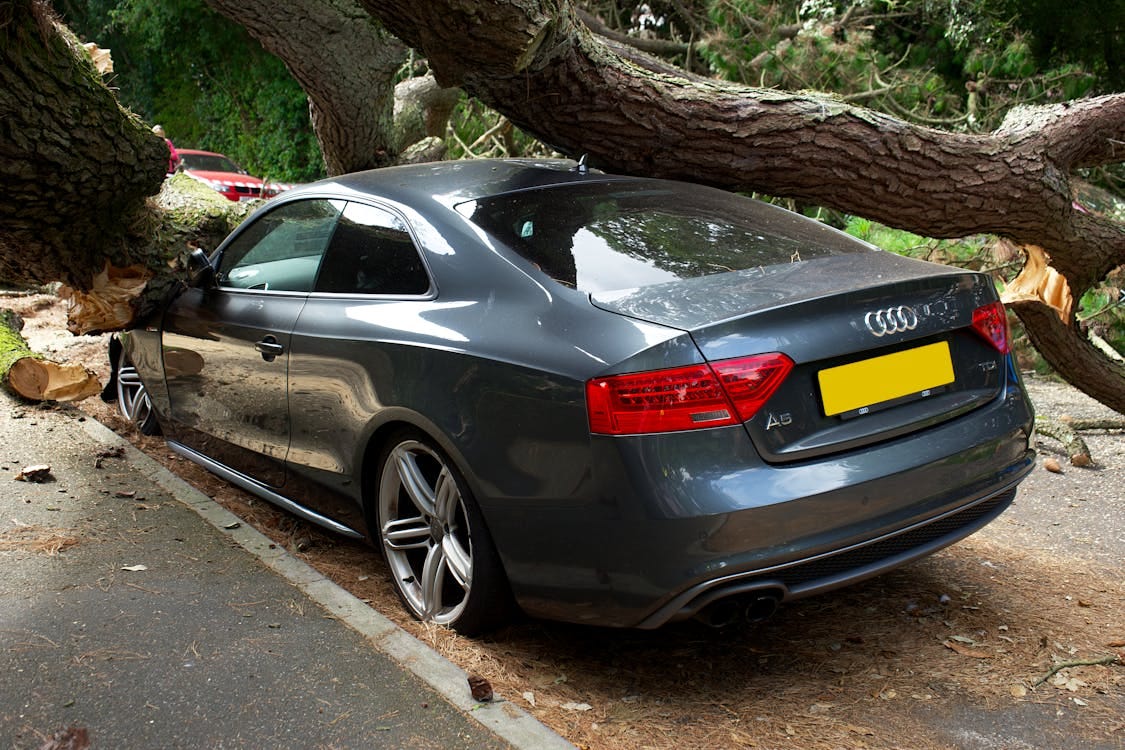When your car is damaged or totaled, your insurer will determine how to settle the claim and pay out the appropriate amount. In a repairable loss, the insurer typically pays the auto shop directly to restore the vehicle to its pre-accident condition (you must cover any deductible if you have selected any). In a total loss (write-off), the insurer calculates the car’s Actual Cash Value (ACV) – essentially the fair market value just before the loss – and offers you a cash settlement based on that amount. (Applicable taxes such as GST/HST on the vehicle’s value are included in the payout, since personal-property taxes must be added to the settlement.) In all cases you remain responsible for your policy deductible, which is subtracted from the claim payout.
Determining Settlement Amount
If repairs are feasible, insurers simply pay the repair costs (up to pre-loss condition) less your deductible. If the insurer declares a total loss, it will take possession of (or auction) the wreck as salvage and give you a single lump-sum payment. That payment equals the car’s ACV plus tax, minus any deductible. For example, if your car’s market value is $10,000 and your deductible is $1,000, the insurer would issue a $9,000 payment (assuming no gaps or other adjustments). You always have the right to question this valuation; Ontario law even allows you to demand an appraisal if you disagree with the insurer’s offer.
Who pays the claim depends on fault. In most provinces (like Ontario), if another driver is fully at fault, your own insurer pays you through Direct Compensation Property Damage (DCPD) up to your coverage limits. If you are at fault, you must have collision or all-perils coverage for damage to your own vehicle. In either case, your claim settlement will be based on the vehicle’s value in your local market and adjusted for things like depreciation and optional endorsements (e.g. new-car replacement or depreciation waivers).
Lienholders, Financing and Lease Payouts
If your car was financed or leased, the finance company (lender or lessor) has a legal interest (lien) in the vehicle’s payout first. Most insurance policies include a loss-payee clause or lienholder protection endorsement that names the lender as a beneficiary first. This means the insurer must protect the lender’s interest on any claim first. In practice, the payout is handled as follows:
Joint payee checks: Insurers will typically issue the settlement cheque jointly to you and the lender. For example, the cheque might read “Pay to the order of Mr John Doe AND [Your Bank]”. Both parties must endorse (sign) such a cheque before funds can be released.
Loan balance first: Under lienholder protection (e.g. OPCF-23A/B in Ontario) the insurer pays the lender first, up to the outstanding loan balance. If the car’s value is less than the loan, you remain responsible for the shortfall. For example, if ACV = $10,000 but you owe $12,000, the insurer will pay the $10,000 to the lender and you must still pay the extra $2,000 on the loan. This is why gap insurance is often recommended; gap covers the difference when you’re “upside-down” on the loan.
Surplus after loan: If the payout exceeds what you owe, the lender is paid in full and the insurer (or lender on its behalf) must give you the remainder of the payout amount. For example, ACV is $15,000 on a $10,000 loan means the lender gets $10k and you get the extra $5k.
Leased vehicles: A leased car works similarly – the payout goes to the leasing company to cover the remaining lease value. If the lease payoff is higher than ACV, you owe the difference. If it’s lower, you keep the remainder.
In short, when a lien exists, the finance company is effectively paid first. The insurer will either send one joint cheque or issue one cheque directly to the lender and another to you for the difference (if any). This protects the lender’s investment first and satisfies the loss-payee clause in your policy as well.
Dealing with a Joint Cheque
Because the check may be co-payable to both you and the lender, you cannot simply deposit it into your personal bank account alone. Banks usually require the payee names on the cheque to match the account name. If the cheque is payable to you and your bank, your bank account (in just your name) won’t accept it without the bank’s endorsement. Practically, you have two main options:
Endorse to the lender first: Sign the cheque and deliver it to your finance company first. They will cash or deposit it to pay off the loan. If there is any left over after settling the auto loan, the lender should then remit the balance to you. This is the standard approach – you “pay off” the loan with the insurance proceeds.
Ask for separate cheques: Contact your insurer (and lender) right away. Some insurers will re-issue the payout as two cheques: one payable to the finance company for the loan balance, and one payable to you for any excess amounts. This can simplify matters. (You’ll need the lender’s authorization for this method.)
If your bank refuses to process the joint cheque, recall that federal law limits how long they can hold it. Federally regulated banks can only place a reasonable hold on deposits (up to 7–8 business days for large cheques) and must then clear or return the funds. Document any correspondence: if the branch is delaying, insist in writing that they deposit or return the cheque so the insurer can re-issue it properly. If the bank still won’t cooperate, you can escalate by contacting the Financial Consumer Agency of Canada (FCAC) or the Ombudsman for Banking Services and Investments (OBSI).
Importantly, don’t try to “keep” the full cheque amount without involving the lender. Even if you were somehow able to deposit it, the lender’s lien means you are still legally obligated to pay off the remaining loan amount first. Skipping the lender could breach your loan agreement. Always ensure the lender is paid as required; then you can use any surplus amount as you wish (for example, buying a new car or investing the money or just keep it deposited in your Bank account for any future use).
Negotiating and Disputing the Settlement
Your settlement offer is negotiable. Do your own research on comparable car values (e.g. local listings, dealer quotes) and discuss these with your claims adjuster. You do not have to accept the first offer if you believe it is too low. In Ontario and other provinces with independent insurance commissions, you have formal dispute rights option available. For example, Ontario’s Financial Services Commission (FSCO) permits an appraisal process: if you and the insurer disagree on the car’s actual cash value, each side selects an appraiser and they jointly determine the fair settlement. (Similar arbitration or complaint options exist in other provinces.)
Before agreeing to any settlement, double-check what it covers. Ensure the payout includes taxes (GST/HST on the vehicle), and remember that you’re still on the hook for the deductible if there is any. Make sure any rental-car coverage or other benefits have been properly accounted for during the claim settlement process/payout.
Key Considerations and Tips
Understand your coverage: Know your deductibles, policy limits, and any endorsements. Optional coverages like new-car replacement (for very new vehicles) or depreciation waivers can increase your payout. If you financed or leased, check that you have the required OPCF-23A/B (lienholder) or OPCF-5 (leased vehicle) endorsements as mandated by some lenders.
Gap insurance: If you have gap insurance, it will automatically pay any “shortfall” if the loan exceeds the insurer’s payout. Lenders often require gap coverage for precisely this reason.
Documentation: Keep detailed records – claim numbers, correspondence with adjusters, loan statements showing your balance, etc. If any disputes arise, these documents will help resolve them.
Bank communication: If your bank puts the cheque on hold or refuses it, ask for their official hold/deposit policy in writing (FCAC rules cap holds at 7–8 days for chequescanada.ca). Use this information when dealing with the insurer or ombudsman.
Tax and salvage: Remember that if you choose to retain a salvage vehicle, the insurer will deduct its salvage value from your payout. On the other hand, if you do not keep the salvage, the insurer will sell it and factor that into the claim settlement (which is why they may pay you slightly more if they expect to recoup value).
Renegotiate if needed: If you’re unhappy with the insurer’s ACV, you can negotiate or formally dispute (via arbitration or your province’s insurance ombudsman). Bring evidence like recent sale prices, repair estimates, or clean title information to support a higher valuation.
Future premiums: Filing a claim may affect your insurance rate. If you have “accident forgiveness” or are not at fault, it may not go up – but check your policy or ask your agent to clarify.
By understanding the claims process and your rights, you can ensure the payout is handled correctly and that the lender’s interests are satisfied. In practice, always coordinate with your finance company when dealing with the insurance cheque. They are legally entitled to the funds up to your remaining loan balance, and only after the debt is cleared do any extra funds belong to you out of the claim payout. If you follow this procedure (endorse or split the cheque), the bank should accept the deposit and you can use your settlement to pay off the loan or invest as you planned.







